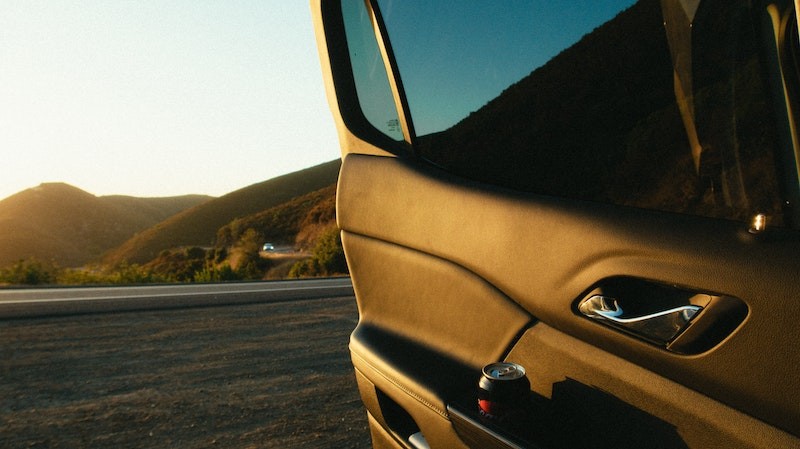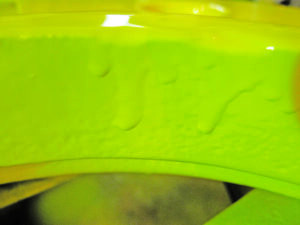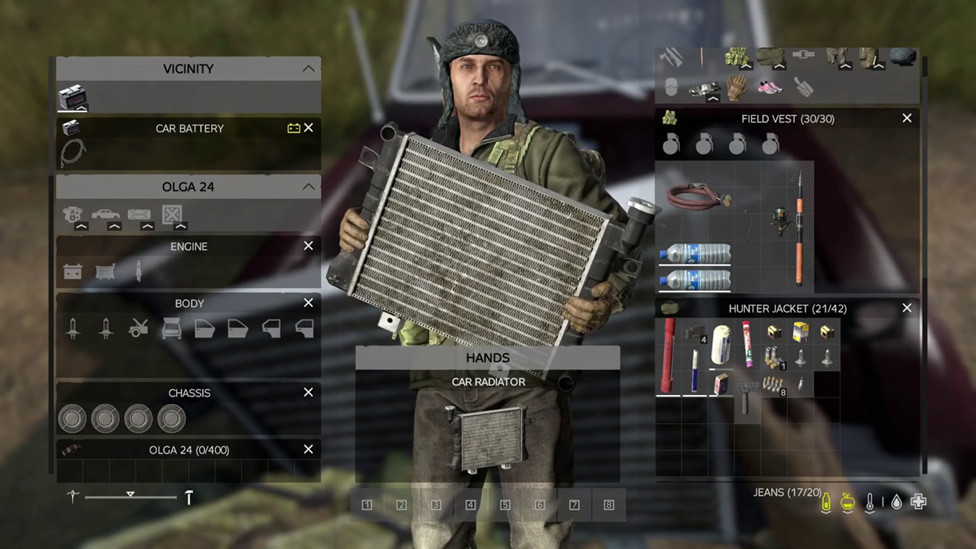How to Fix Bubble Rust on Car: A Comprehensive Guide
Fixing bubble rust on your car is crucial for maintaining its appearance and structural integrity. At CARDIAGTECH.NET, we provide the tools and knowledge you need to tackle this issue effectively. Read on to discover the causes, solutions, and preventative measures for dealing with car paint bubbling and rust. Discover how to address car body rust repair and prevent future corrosion.
1. Understanding Bubble Rust Formation on Cars
1.1 What Causes Bubble Rust?
Bubble rust, also known as osmotic blistering, occurs when moisture gets trapped beneath the paint layer of your car. This trapped moisture leads to corrosion, causing the paint to bubble and blister. According to a study by the National Association of Corrosion Engineers (NACE), moisture and contaminants are primary accelerators of automotive corrosion.
1.2 The Role of Moisture
Moisture plays a significant role in the formation of bubble rust. During the painting process, if moisture is trapped between the paint layers or between the paint and the metal surface, it can lead to osmotic blistering. As the moisture tries to escape, it creates bubbles or blisters on the paint’s surface.
1.3 Identifying Early Signs of Rust
Early detection is key to preventing extensive damage. Look for small, raised areas or blisters in the paint. These are often the first signs of rust forming beneath the surface. Addressing these issues early can save you time and money in the long run.
2. Distinguishing Between Rust Bubbles and Other Paint Imperfections
2.1 Rust Bubbles vs. Moisture Bubbles
It’s important to differentiate between rust bubbles and moisture bubbles. Rust bubbles typically occur in localized areas and are often accompanied by a reddish-brown discoloration, which is the rust itself. Moisture bubbles, on the other hand, may appear more randomly across the surface and may not have the same discoloration.
2.2 Identifying Solvent Pop
Solvent pop is another type of paint imperfection that can resemble bubbles. This occurs when solvents trapped in the paint evaporate too quickly, leaving small craters or pinholes in the paint surface. Unlike rust bubbles, solvent pop doesn’t involve corrosion of the metal underneath.
2.3 Recognizing Delamination
Delamination is the separation of paint layers, often due to poor adhesion or exposure to the elements. This can cause the paint to peel and bubble, similar to rust bubbles. However, delamination typically affects larger areas and doesn’t necessarily indicate the presence of rust.
3. Essential Tools and Materials for Fixing Bubble Rust
Having the right tools and materials is essential for effectively fixing bubble rust. CARDIAGTECH.NET offers a wide range of high-quality tools to help you get the job done right. Here’s a breakdown of what you’ll need:
3.1 Safety Gear
- Safety Glasses: Protect your eyes from debris and chemicals.
- Gloves: Protect your hands from chemicals and sharp edges.
- Respirator: Avoid inhaling harmful fumes from paint and chemicals.
3.2 Removal Tools
- Sandpaper: Different grits (80, 120, 220, 320) for removing rust and smoothing surfaces.
- Wire Brush: For removing loose rust and debris.
- Scraper: For removing loose paint and rust.
- Grinder with Sanding Discs: For larger areas of rust removal.
3.3 Treatment and Repair Materials
- Rust Converter: Chemically converts rust into a stable compound.
- Body Filler (Bondo): For filling in damaged areas.
- Primer: To prepare the surface for painting.
- Automotive Paint: Matching the original color of your car.
- Clear Coat: To protect the paint and add a glossy finish.
3.4 Application Tools
- Paint Brushes: For applying rust converter and primer.
- Spray Gun: For applying paint and clear coat (optional but recommended for a professional finish).
- Mixing Sticks and Cups: For mixing body filler and paint.
- Tack Cloth: For removing dust and debris before painting.
3.5 CARDIAGTECH.NET Recommendations
At CARDIAGTECH.NET, we recommend the following products for your rust repair project:
| Tool/Material | Description |
|---|---|
| 3M Rust Fighter | A rust converter that penetrates deeply to neutralize rust and prevent further corrosion. |
| Bondo Body Filler | A reliable body filler for repairing dents and smoothing surfaces. |
| Eastwood Automotive Paint | High-quality automotive paint with excellent color matching and durability. |
| SATA Spray Gun | For achieving a professional-grade finish with even application and minimal overspray. |
| Safety Gear Kit | Includes safety glasses, gloves, and a respirator to protect you during the repair process. |
4. Step-by-Step Guide to Fixing Bubble Rust
4.1 Preparation is Key
4.1.1 Cleaning the Area
Start by thoroughly cleaning the area around the bubble rust with soap and water. Remove any dirt, grease, or contaminants that could interfere with the repair process.
4.1.2 Masking the Surrounding Area
Use masking tape and paper to protect the surrounding paint from accidental sanding or painting. This will help you achieve a clean and professional finish.
4.2 Removing the Rust
4.2.1 Sanding Down the Bubbled Area
Using 80-grit sandpaper, carefully sand down the bubbled area to remove the rust and loose paint. Gradually move to finer grits (120, 220) to smooth the surface.
4.2.2 Using a Wire Brush
For hard-to-reach areas or stubborn rust, use a wire brush to scrub away the corrosion. Be careful not to damage the surrounding paint.
4.2.3 Grinding for Extensive Rust
If the rust is extensive, use a grinder with sanding discs to remove it quickly. Be cautious and avoid grinding too deep into the metal.
4.3 Treating the Rust
4.3.1 Applying Rust Converter
Apply a rust converter to the affected area. This chemical treatment converts the remaining rust into a stable compound, preventing further corrosion. Follow the manufacturer’s instructions for application and drying time.
4.3.2 Neutralizing the Area
After the rust converter has dried, neutralize the area with a mild alkaline solution. This will ensure that the rust conversion process is complete.
4.4 Repairing the Surface
4.4.1 Applying Body Filler (Bondo)
If the sanding process has left any dents or imperfections, apply a thin layer of body filler (Bondo) to the area. Mix the filler according to the manufacturer’s instructions and apply it evenly with a plastic spreader.
4.4.2 Sanding the Body Filler
Once the body filler has dried, sand it down with progressively finer grits of sandpaper (120, 220, 320) until it is smooth and flush with the surrounding surface.
4.5 Painting the Repaired Area
4.5.1 Applying Primer
Apply a thin, even coat of primer to the repaired area. Primer helps the paint adhere properly and provides a uniform base for the color coat.
4.5.2 Sanding the Primer
After the primer has dried, lightly sand it with 320-grit sandpaper to create a smooth surface for painting.
4.5.3 Applying Automotive Paint
Apply several thin coats of automotive paint, allowing each coat to dry before applying the next. Use a spray gun for a professional finish, or a high-quality brush for smaller areas.
4.5.4 Applying Clear Coat
Once the paint has dried, apply a clear coat to protect the paint and add a glossy finish. Apply several thin coats, allowing each coat to dry before applying the next.
4.6 Polishing and Buffing
4.6.1 Polishing the Surface
After the clear coat has dried completely, polish the surface with a polishing compound to remove any imperfections and enhance the shine.
4.6.2 Buffing the Area
Finally, buff the area with a soft cloth or buffing pad to achieve a smooth, glossy finish that matches the surrounding paint.
5. Advanced Techniques for Severe Rust Damage
5.1 Welding Patches
For severe rust damage that has eaten through the metal, welding in new metal patches may be necessary. This requires specialized skills and equipment.
5.2 Cutting and Replacing Panels
In extreme cases, it may be more cost-effective to cut out the damaged panel and replace it with a new one. This is a complex procedure that should be performed by a professional.
5.3 Professional Rust Repair Services
If you’re not comfortable performing these advanced techniques yourself, consider seeking professional rust repair services. CARDIAGTECH.NET can connect you with trusted auto body shops in your area.
6. Preventing Future Rust Issues
6.1 Regular Washing and Waxing
Regular washing and waxing can help protect your car’s paint from the elements and prevent rust from forming. Wax creates a protective barrier that repels water and contaminants.
6.2 Applying Rust Inhibitors
Applying rust inhibitors to vulnerable areas, such as undercarriage and wheel wells, can help prevent rust from forming in the first place.
6.3 Storing Your Car Properly
If possible, store your car in a garage or covered area to protect it from the elements. This can significantly reduce the risk of rust formation.
6.4 Addressing Scratches and Chips Promptly
Repair scratches and chips in the paint as soon as possible to prevent moisture from reaching the metal underneath.
6.5 Routine Inspections
Regularly inspect your car for signs of rust and address any issues promptly. Early detection is key to preventing extensive damage.
7. The Science Behind Rust Formation
7.1 The Electrochemical Process of Rusting
Rust formation is an electrochemical process that involves the oxidation of iron in the presence of water and oxygen. This process creates iron oxide, which is what we know as rust.
7.2 Factors Accelerating Rust Formation
Several factors can accelerate rust formation, including:
- Salt: Salt is a major accelerator of rust, especially in coastal areas or regions where salt is used for de-icing roads.
- Pollution: Air pollution can contain chemicals that accelerate rust formation.
- Humidity: High humidity levels increase the amount of moisture in the air, which promotes rust formation.
7.3 How Different Metals React to Corrosion
Different metals react differently to corrosion. Iron and steel are particularly susceptible to rust, while aluminum and stainless steel are more resistant.
8. Real-World Examples and Case Studies
8.1 Case Study 1: Restoring a Classic Car
Learn how a classic car was restored from severe rust damage using advanced techniques and high-quality products from CARDIAGTECH.NET.
8.2 Case Study 2: Preventing Rust in a Coastal Area
Discover how regular maintenance and rust inhibitors helped prevent rust formation on a car in a coastal area.
8.3 DIY vs. Professional Repair: A Cost Comparison
Compare the cost of DIY rust repair versus professional repair services, and learn when it’s best to hire a professional.
9. Addressing Common Myths About Rust Repair
9.1 Myth: Rust is Only a Cosmetic Issue
Rust can compromise the structural integrity of your car and should be addressed promptly.
9.2 Myth: You Can Just Paint Over Rust
Painting over rust without proper treatment will only hide the problem temporarily and the rust will continue to spread underneath the paint.
9.3 Myth: All Rust Converters Are the Same
Different rust converters have different formulations and effectiveness. Choose a high-quality rust converter from a trusted brand like those available at CARDIAGTECH.NET.
10. CARDIAGTECH.NET: Your Partner in Automotive Care
10.1 Our Commitment to Quality
At CARDIAGTECH.NET, we are committed to providing high-quality tools and materials for all your automotive repair needs.
10.2 Expert Advice and Support
Our team of experts is here to provide advice and support to help you tackle any rust repair project. Contact us at +1 (641) 206-8880 for personalized assistance.
10.3 Shop Our Wide Selection of Rust Repair Products
Visit CARDIAGTECH.NET today to shop our wide selection of rust repair products and get your car looking like new again. Our address is 276 Reock St, City of Orange, NJ 07050, United States.
FAQ: Frequently Asked Questions About Fixing Bubble Rust
1. How much does it cost to fix bubble rust on a car?
The cost to fix bubble rust on a car can vary widely depending on the extent of the damage and whether you choose to DIY or hire a professional. DIY repairs can range from $50 to $200 for materials, while professional repairs can cost anywhere from $300 to $1,000 or more.
2. Can I fix bubble rust myself, or do I need a professional?
Whether you can fix bubble rust yourself depends on your skill level and the extent of the damage. Minor surface rust can often be repaired with DIY methods, but severe rust damage may require professional expertise.
3. What are the best tools for removing rust from a car?
The best tools for removing rust from a car include sandpaper (various grits), a wire brush, a scraper, and a grinder with sanding discs for larger areas. CARDIAGTECH.NET offers a wide selection of high-quality tools for rust removal.
4. How do I prevent rust from coming back after fixing it?
To prevent rust from coming back after fixing it, apply a rust converter, use a high-quality primer and paint, and regularly wash and wax your car. Additionally, consider applying rust inhibitors to vulnerable areas.
5. What is the difference between surface rust and penetrating rust?
Surface rust affects only the surface of the metal and can often be removed with sanding and rust converter. Penetrating rust, on the other hand, has eaten through the metal and may require welding or panel replacement.
6. Is it safe to drive a car with rust?
Driving a car with rust is generally safe if the rust is only cosmetic. However, if the rust has compromised the structural integrity of the vehicle, it can be dangerous and should be repaired immediately.
7. How often should I inspect my car for rust?
You should inspect your car for rust at least twice a year, especially before and after winter. Regular inspections can help you catch rust early and prevent extensive damage.
8. Can salt accelerate rust formation on cars?
Yes, salt is a major accelerator of rust formation on cars. It’s important to wash your car regularly, especially during winter when roads are salted.
9. What is the best way to protect my car from rust in a coastal area?
To protect your car from rust in a coastal area, wash it frequently to remove salt deposits, apply rust inhibitors, and consider storing it in a garage or covered area.
10. Where can I buy high-quality rust repair products?
You can buy high-quality rust repair products at CARDIAGTECH.NET. We offer a wide selection of tools and materials to help you tackle any rust repair project. Visit us at 276 Reock St, City of Orange, NJ 07050, United States, or call us at +1 (641) 206-8880.
Bubble rust can be a frustrating problem for car owners, but with the right tools and knowledge, it can be effectively addressed. CARDIAGTECH.NET is here to provide you with everything you need to keep your car looking its best and to prevent rust from damaging your vehicle. Our commitment to quality and expert advice ensures that you’re well-equipped to handle any rust repair project.
Don’t let rust compromise the appearance and integrity of your car. Contact CARDIAGTECH.NET today at +1 (641) 206-8880 for personalized assistance and discover the best solutions for your rust repair needs. Our team is ready to help you select the right tools and materials, ensuring a successful and long-lasting repair.
Visit CARDIAGTECH.NET now to explore our extensive range of rust repair products and take the first step towards restoring your car to its former glory. Your car deserves the best care, and CARDIAGTECH.NET is here to deliver it. Let us help you protect your investment and keep your vehicle in top condition.






